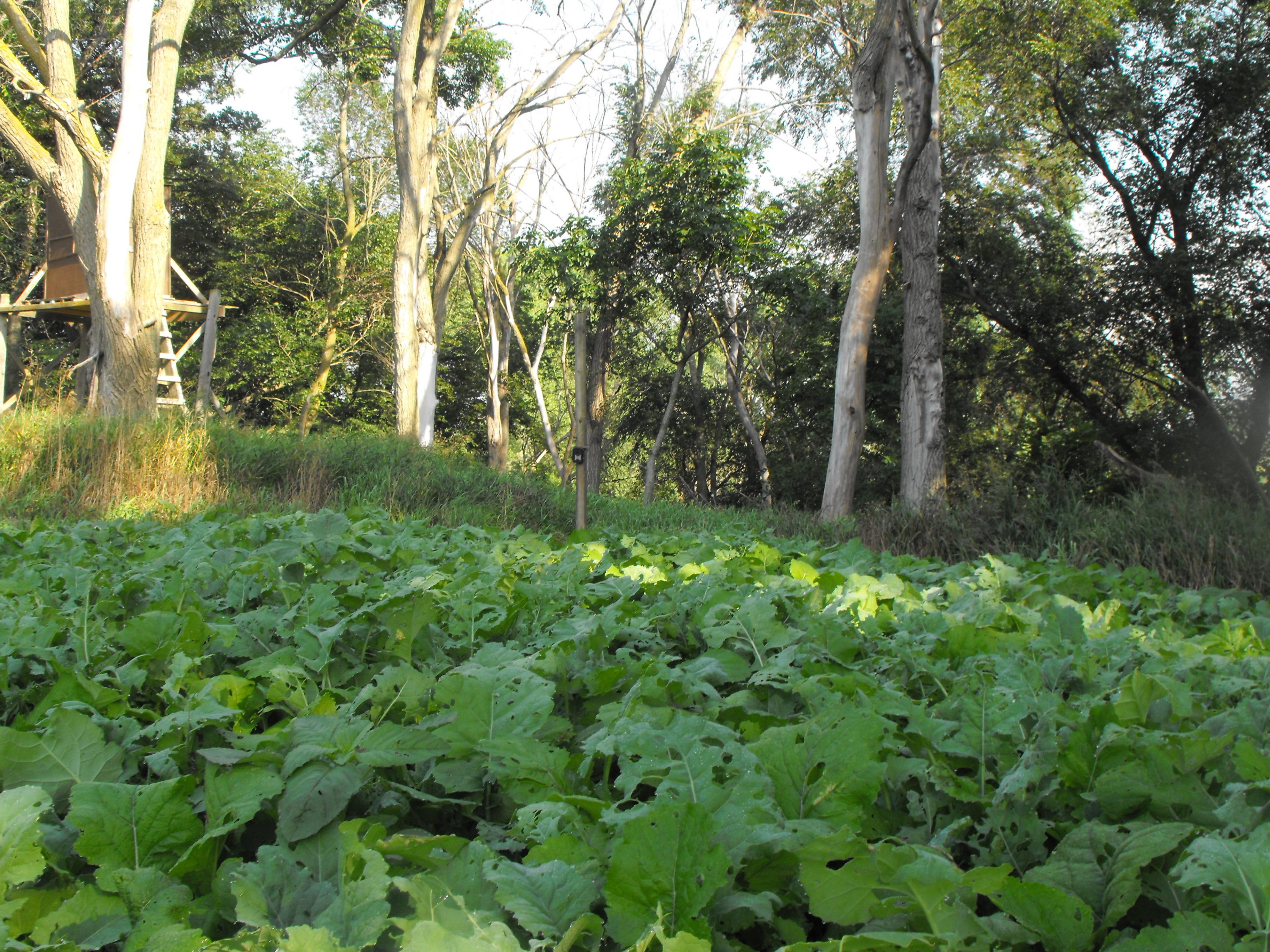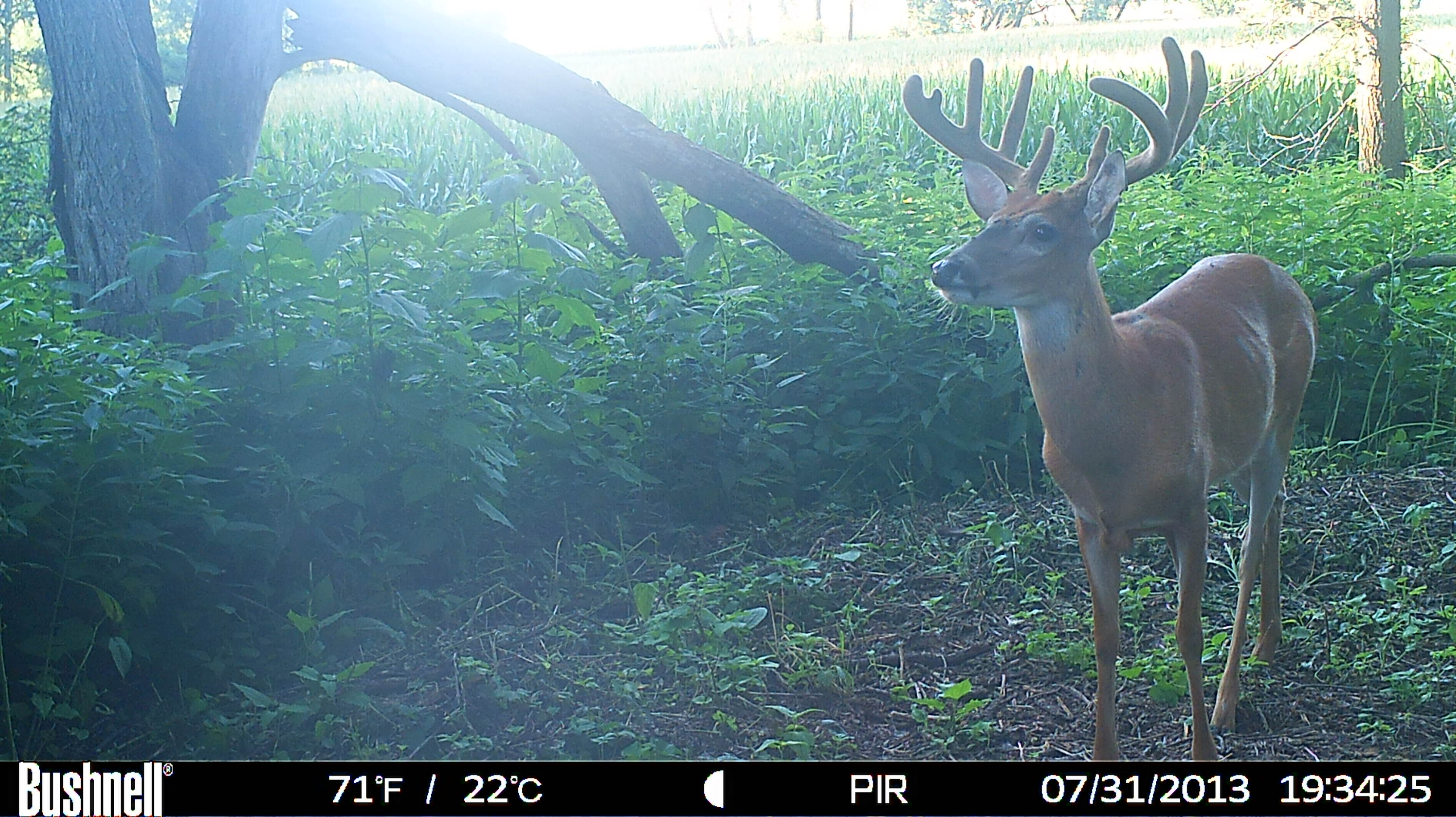When it comes to food plots and mineral licks, some believe the best time to plant them is in the spring and there is no doubt that spring plantings are beneficial, as long as the wildlife does not eat or destroy it before the cold weather arrives.
Any food plot, as well as mineral licks, no matter when they are established can be beneficial to wildlife, but it needs to be available throughout the year at those times, when wildlife most needs it.
For me, I have tried both spring and fall food plots, but after several disappointing spring plantings that were devastated by deer, turkeys and other wildlife before winter, I decided that late summer or early fall planting, those put in late July and August worked the best for me.
Just like any planting in order to do well, come up and used by wildlife when archery season opens, they need decent timely rains. With good weather conditions, there is a good chance that at least some of it will be available after the rut on into the winter.
There has been a lot said as far as the good and the bad when it comes to putting in food plots.
On one side, there are those who believe there is no need for food plots, believing that there is plenty for wildlife to feed on and they do more harm than good, while on the other side, there are those who feel food plots are something important wildlife and needed, especially in our northern tier of states.
To me there is no doubt that good food plots concentrates wildlife. Making it easier for predators to find the game, but their benefits, especially during our cold tough winters, after the rut when bucks are worn out and later when does are carrying their fawns, when other good food sources are gone, or unavailable, is when wildlife suffers. This is when wildlife needs a place to feed, when having established food plots outweigh the disadvantages.
I feel that any food plot, whether it was planted in the spring or in the fall, if put in properly and established correctly serves its purpose, giving upland game, deer and other wildlife the help needed when other food sources are gone.
The important thing is to establish your food plot in proper locations and that you put them in properly.
Just like anything else from a business to food plots, the important thing is location, location, location. Food plot locations should be close by and easily accessed by wildlife, especially during the winter.
They need to be in close proximity to the area where wildlife lives! During the winter, wildlife has very little energy to waste and if they leave cover and travel a long distance to get to a food plot they use up valuable energy, exposing themselves and more susceptible to attacks by predators.
The closer a food source is to where wildlife beds down or roosts in winter cover, such as sloughs, CRP and wooded areas the better their chances of survival will be.
If you establish your food plots near these areas, wildlife has availability to these food sources without using up their energy needed to survive the harsh weather or having to worry about traveling across open ground.

Fall plantings are much easier to start and generally last longer than some of those put in during the spring. This fall Brassica planting was available during the archery deer season and then through much of late winter.
There is a lot more to putting in a food plot than simply throwing some seed on the ground and by doing it right, your food plot will be there when wildlife needs it.
To be successful at establishing a good food plot, one there throughout the year, studies have indicated there are four important steps you should follow in order to have a successful food plot. They are seed soil contact, adequate soil moisture, adequate soil temperature, and adequate soil ingredients.
When planting a new food plot, you need to make sure that your seed is in good contact with the soil and not just lying on the ground. You need to work the soil, down about three or four inches, and if needed tilling it several times to break up any large clumps of dirt.
Do not overdo it, tilling the soil too deep which brings up weed seed and you do not want to fight any more weeds than you have to in your food plot.
Now that you have the soil prepared, rake the area, removing any rocks and other trash. There is no need for fancy equipment to spread your seed as you can use the same type of equipment used to spread the fertilizer on your yard or by hand in those smaller areas.
You want to sow your seed on in several different directions and not planting it in just one direction. Spread half of your seed on your first seeding trip through the field and then the rest going at right angles to the direction you seeded at first, doing it this way, assured you will cover the entire area.
Work the seed in, no deeper than ¼ inch and always follow the planting directions on the package. Once you have finished planting, roll or pack it to firm up the seedbed.

Food plots and mineral licks when placed close to where deer travel, attract deer. If game cameras are placed along these routes they let the hunter know what deer are using their property as well as to see which deer survived the deer season.
Another thing needed is adequate rain, soil moisture and if everything works out the way you hoped, Mother Nature would supply enough moisture to keep the seeds moist. To make sure your seeds germinate evenly, you do not want the topsoil layer to dry out as this creates problems for plants, making it tough for the plants to get through the hard surface crust.
Without adequate soil temperature, when soil temperatures reach approximately 50 degrees, it takes longer for cool season grasses and legumes to germinate. Adequate soil temperature is something you need during spring planting and not a huge problem when planting in the fall.
Seeds have enough nutrients to germinate and send out roots, sending them out in search of food; this is why you should have an adequate supply of nutrients, those adequate ingredients in the soil at all times.
Before planting, I would recommend that you do a soil test. The information obtained from the test will help to insure that adequate nutrients are present in order to assure your food plots success.
Once you have the information from your soil test, adding what nutrients is needed, planted and added fertilizer, begin regular fertilization throughout the growing period.
Right now, is a good time to start thinking about putting your fall food plot, as a food plot planted in the fall is much easier to get started and you will have a lot less problems than those started in the spring.
There are several types of food plots that when planted in early fall will have enough growth by the time the archery season opens to attract wildlife, these include Brassicas, that include turnips, rapeseed, and radishes, cereal grains; wheat, oats, and rye as well as some annual clovers.
By following these and the manufacturer’s recommendations, it is a good bet your planting will not only be successful, but located in an area where wildlife has easy and safe access too.
Photo Caption # 2
(Gary Howey Photo)





0 Comments